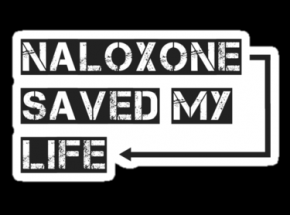Opinion:Follow the Quincy Narcan model
Summary/Abstract
Massachusetts Pilot Naloxone Program that permits addicts, family members and friends to act as first responders and administer naloxone (Narcan) to opioid overdose victims has reversed over 2,300 overdoses.
Content
Nobdy deserves to die of a heroin overdose, just as no one deserves to die of a heart attack. A drug, administered quickly, can make the difference between surviving an overdose and dying from one.
It’s sad that it has taken the death of a respected actor to change the tone of America’s conversation about heroin. Philip Seymour Hoffman may be mourned by more people who never met him, but everyone who dies with a needle in his or her arm leaves behind relatives and friends filled with grief and guilt.
For too long, most people who didn’t know the victims of heroin overdoses just shrugged off their deaths as the inevitable result of bad decisions. They blamed the victims for their addiction; blamed the drugs for their deaths.
But nobody deserves to die of a heroin overdose, just as no one deserves to die of a heart attack. An overdose is a mistake in taking the drug, and it doesn’t have to be a fatal one. A drug, administered quickly, can make the difference between surviving an overdose and dying from one.
The drug is naloxone, marketed as Narcan, and it’s been used in hospital emergency rooms for years. Naloxone, often administered as a nasal spray, can reverse a heroin overdose. Over the last several years, pilot programs have put naloxone in the hands of first responders – ambulance crews, police and firefighters – in several Massachusetts cities. Since 2010, the Quincy Police Department has used Narcan kits more than 200 times to revive people who have overdosed and has become the national model for other departments. Most recently, Stoughton police will carry Narcan in its cruisers as well. We applaud them for their forward, compassionate response to the growing heroin epidemic.
A pilot program run through the Massachusetts Department of Public Health in 15 cities has trained and encouraged another kind of “first responder” – drug users, their friends and family members who may be present when an overdose occurs. Their naloxone interventions have resulted in the reversal of more than 2,300 overdoses.
With overdose deaths from heroin and prescription painkillers on the rise, officials are now pushing to expand the use of naloxone. Boston Mayor Marty Walsh this week said he wants all city police and firefighters trained to administer the drug. Sen. Ed Markey has asked federal health officials what it would take to expand emergency responder and “bystander” naloxone programs nationwide.
Local, state and federal officials should embrace this life-saving treatment. Just as, a decade or more ago, heart defibrillators moved from hospitals, to ambulances, to school gyms and private fitness centers, Narcan should be available wherever a drug overdose happens.
Opioid and heroin addiction is difficult to treat, but not impossible. In Massachusetts and across the nation, officials are at last talking about improving access to treatment for addicts instead of just locking them up for longer sentences.
An emphasis on “harm-reduction” is replacing the failed “war on drugs,” a change that is long overdue. In that context, giving first responders the tools they need to prevent fatal overdoses is an easy call.






